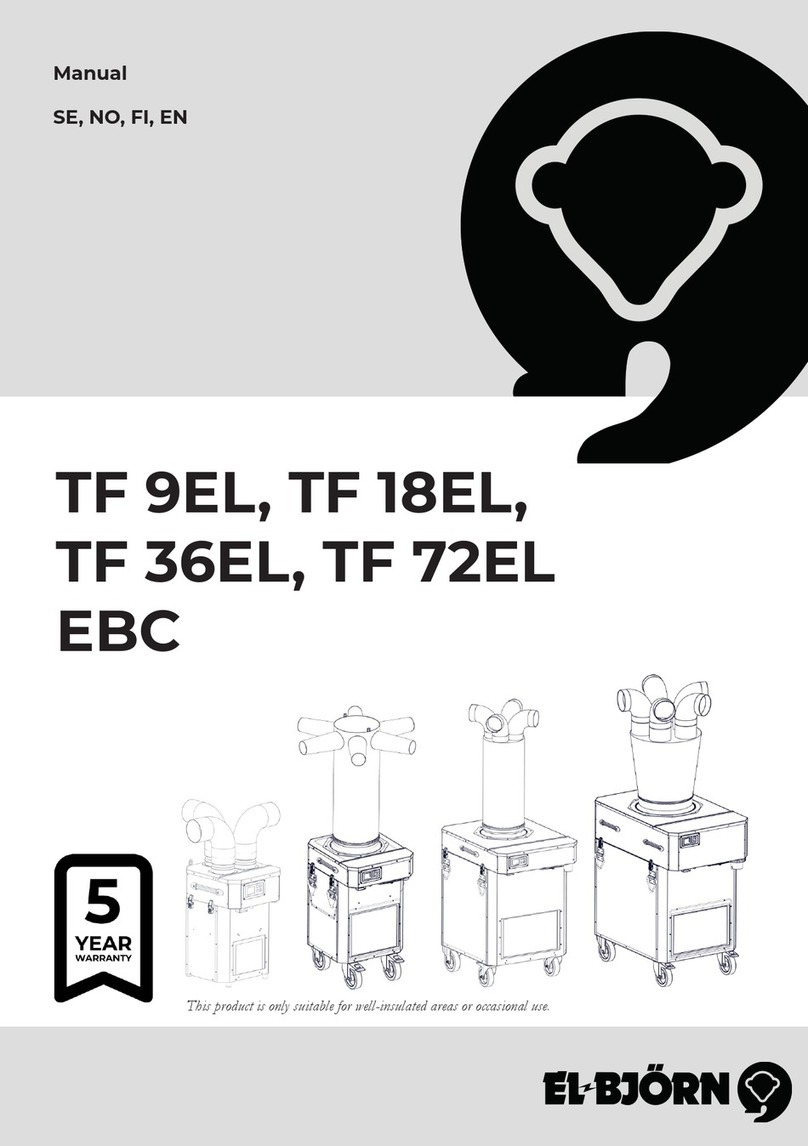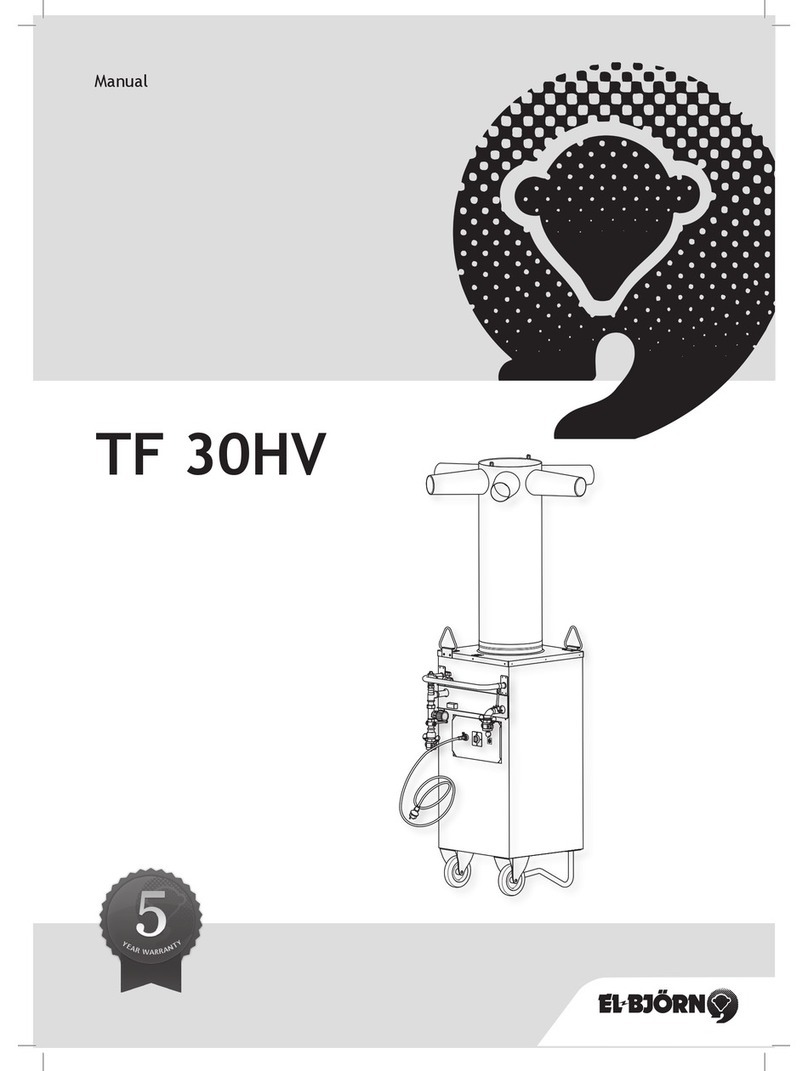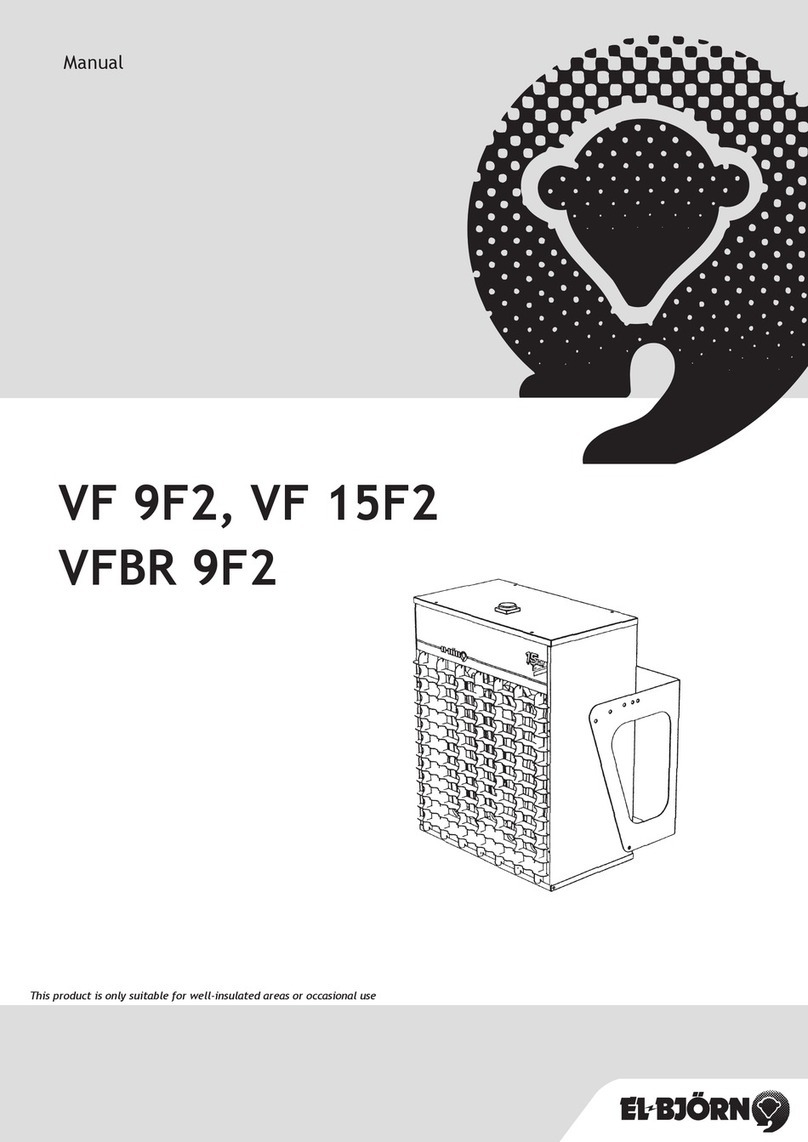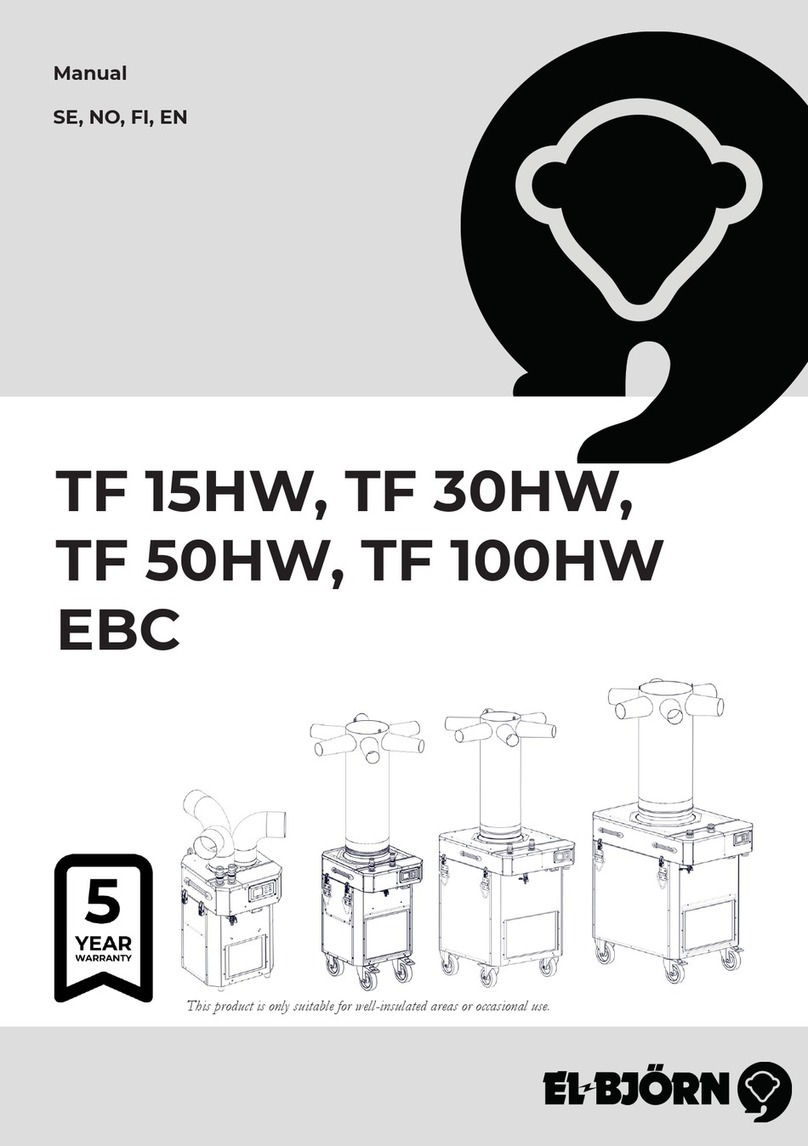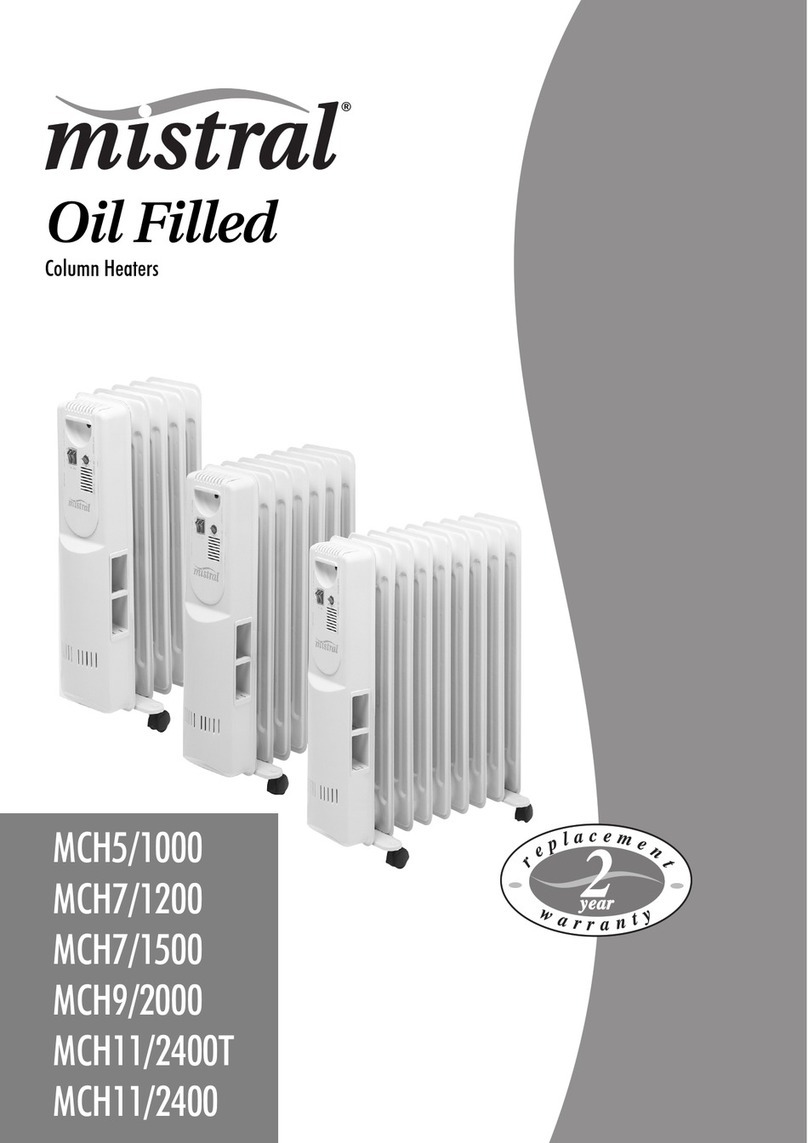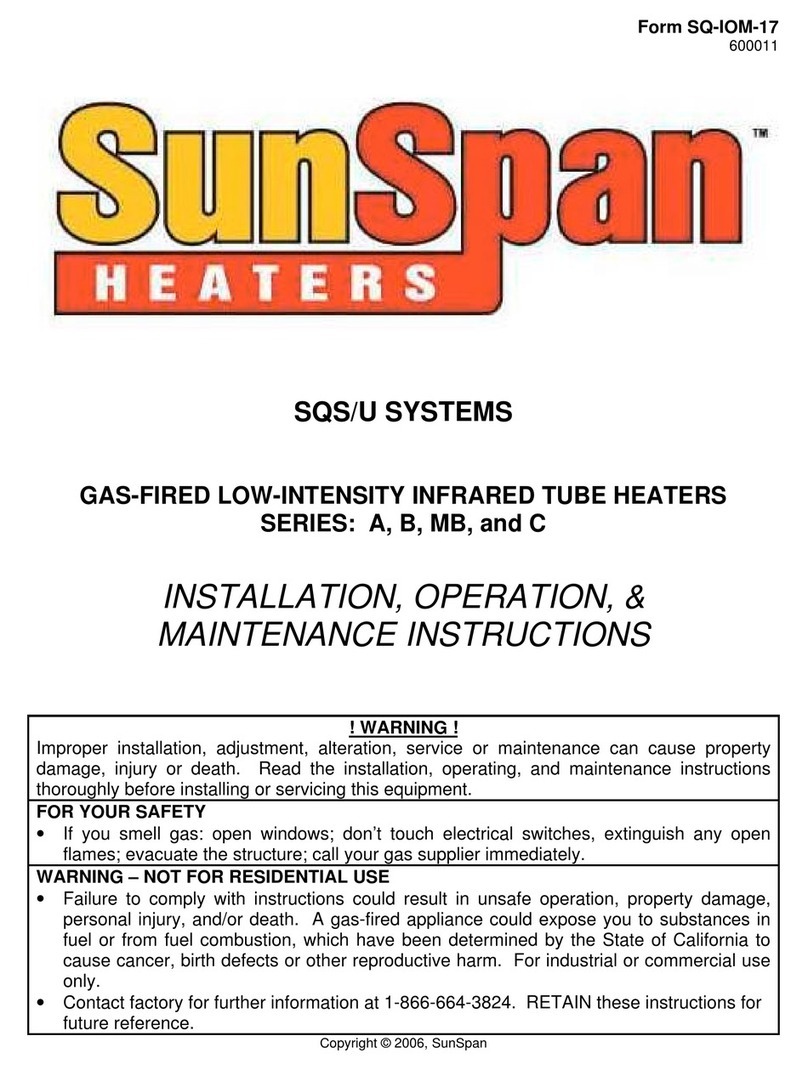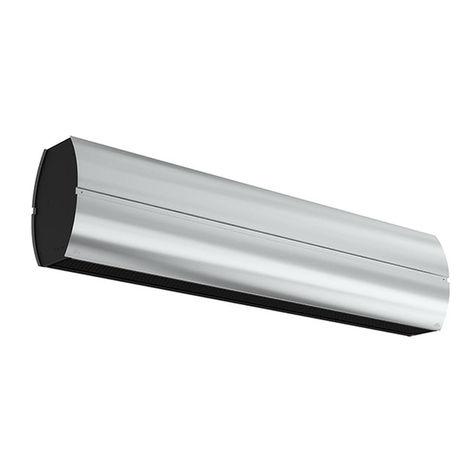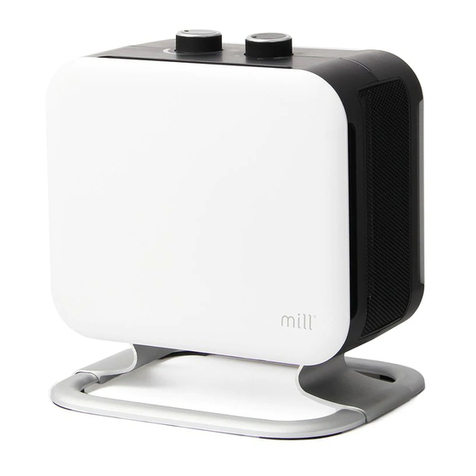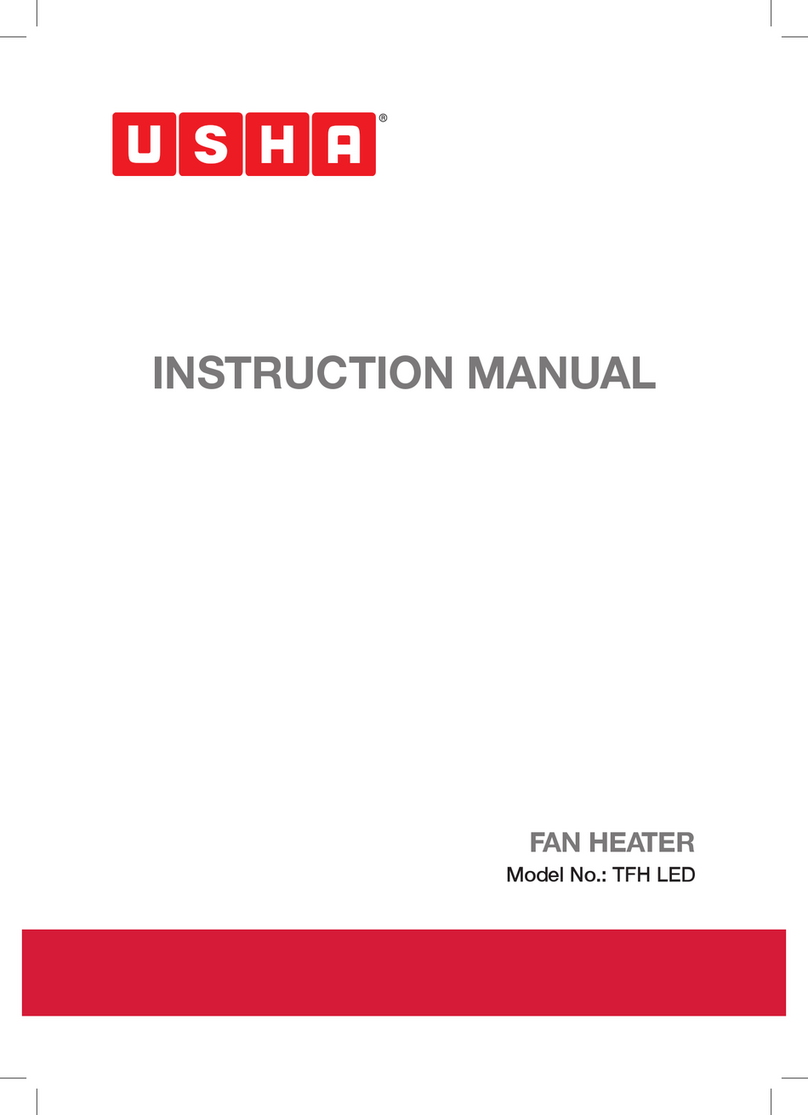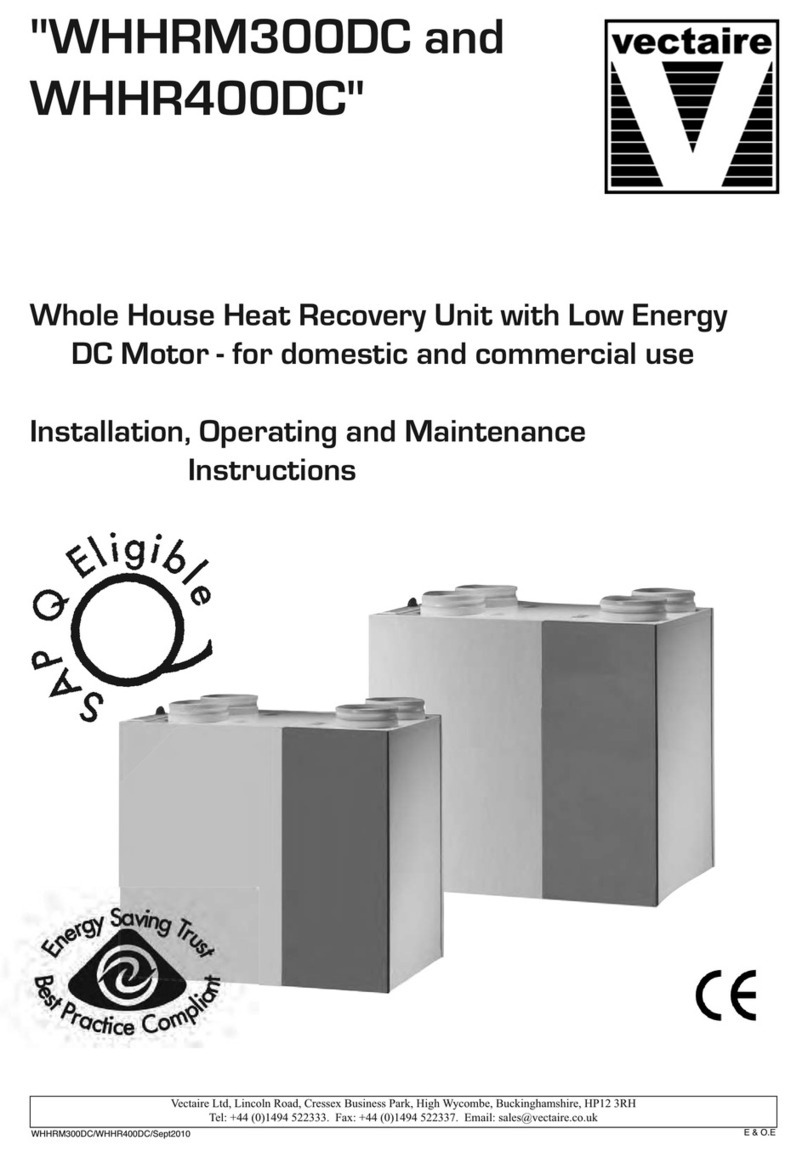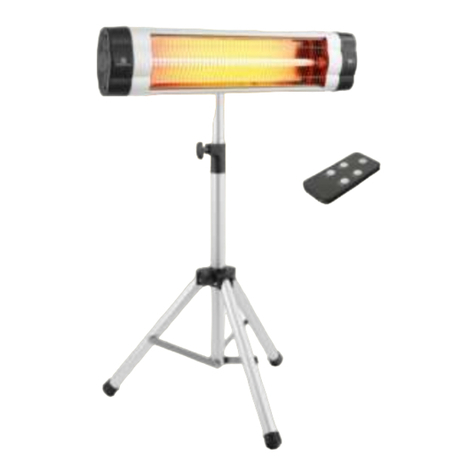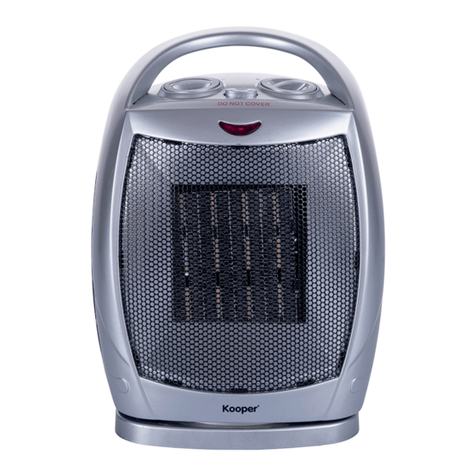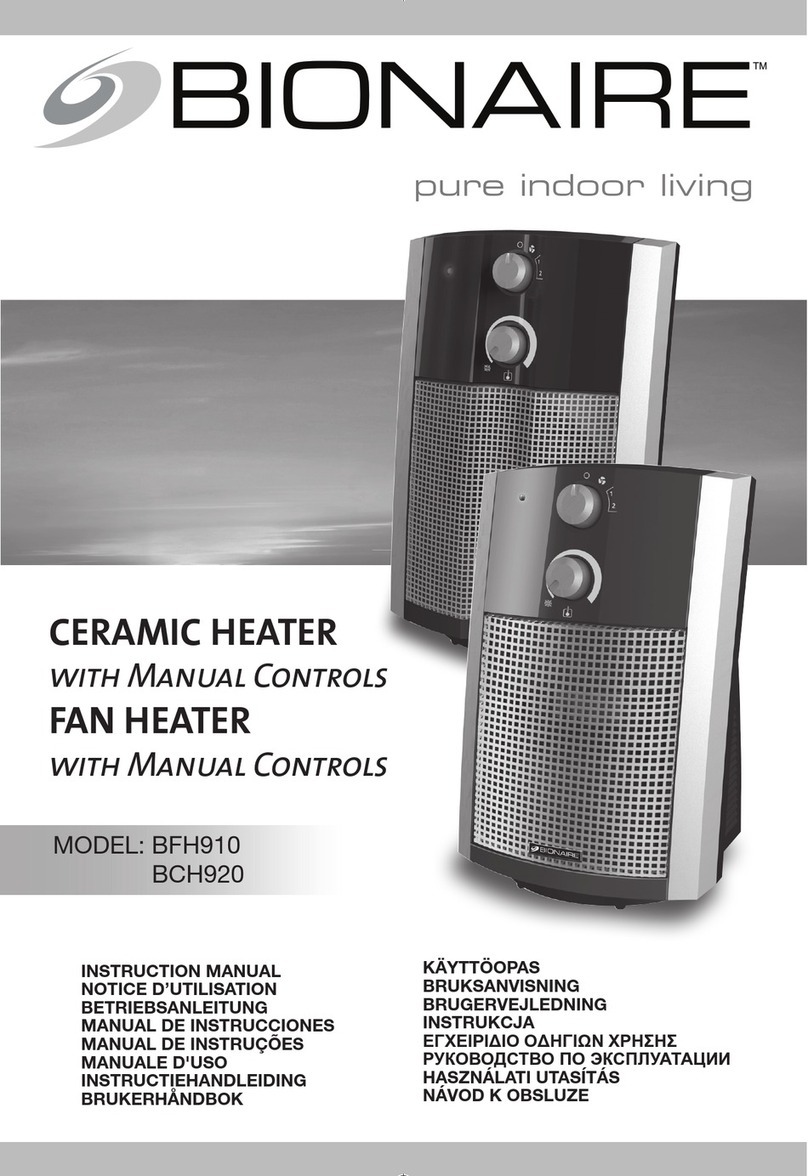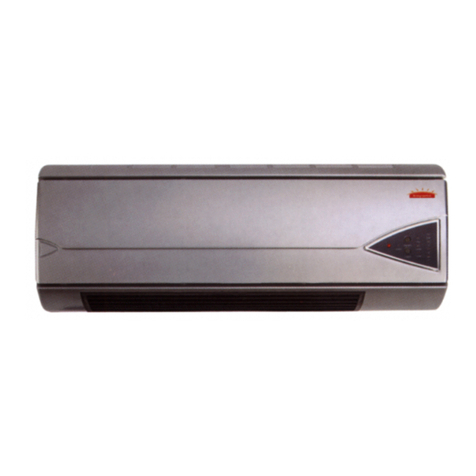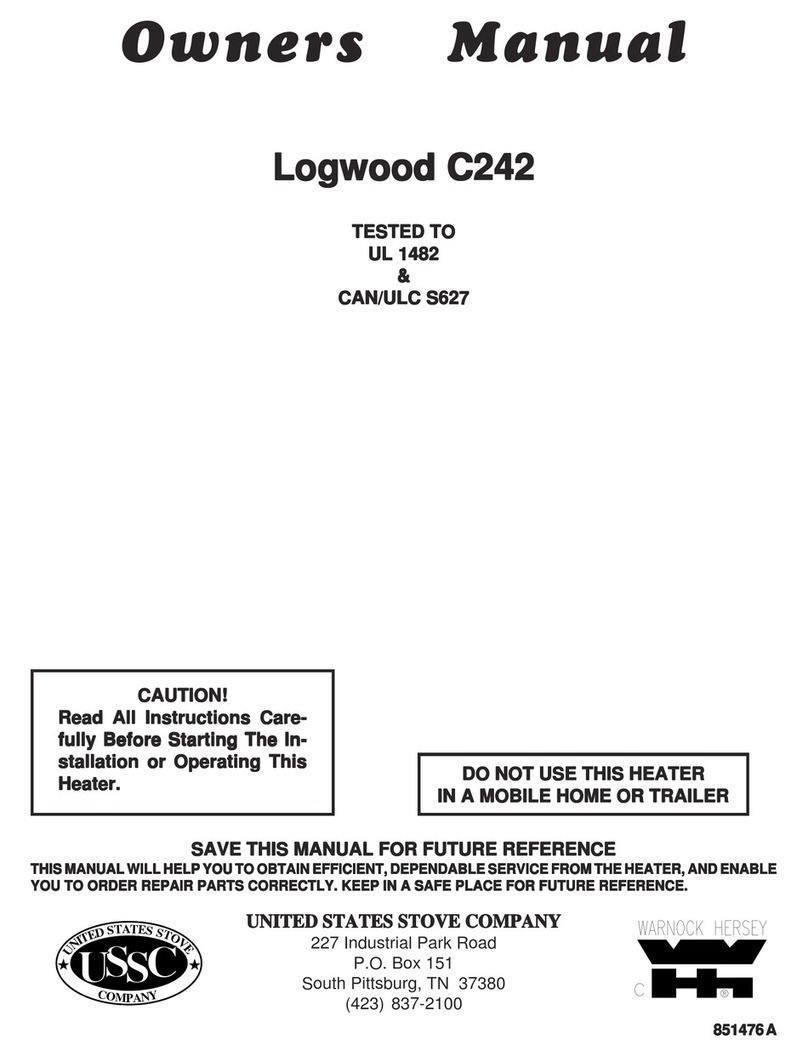4
Phase sensitivity
The TVS 300 requires a 400 Volt 3 Phase 50 Hz electrical supply. The control panel isolator also serves as a phase rotation/selec-
tion switch in the event of incompatibility between the site supply and the appliance. The control panel also has a phase warning
lamp in the event of incompatibility.
Ventilation – without heating
The TVS 300 can be used without its heating capabilities as a ventilation fan to add “make up” air to an enclosed area from outside
via ducting, or from inside via an external duct. It can also be used as an air extract fan, to extract air from within an enclosed space.
Again, this can be done via ducting with the TVS 300 situated within the area our outside the area.
Heating
The TVS 300 has a high efciency combustion chamber and heat exchanger, and can be operated to provide clean warm air to an
area, either as a free blowing unit, or with ducting connected to either, or both, the inlet and the discharge spigots. The heating
circuit has two heat settings offering 300kW (high) or 175kW (low) of heating. The control panel on the TVS 300 has a connection
for an external room thermostat or time clock to control the demand for heating. The TVS 300 is supplied with an electrical link in
place within the external thermostat socket on the control panel, this provides a constant demand for heat, and should be removed
and replaced with an external thermostat or time clock if these are required. It should be noted that the burner will not be enabled
unless there is a demand for heat (or the link is present). At the end of a heating cycle the appliance must be allowed cool down so
as to dissipate residual heat from the combustion chamber and heat exchanger, and the main electric supply must not be turned off
until the fan over run cycle has been completed and the appliance has cooled to a safe level.
Burner
The TVS 300 is tted with a fully automatic Riello RL 44 oil red burner, which includes a sequential control box, and all necessary
safety interlocks. The burner has high re and low re settings, the ring rates of which have been factory set during pre-delivery
testing and setting. Combustion settings and ue gas analysis details are contained within Section XXX of this manual.
Operating devices
The controls on the TVS 300 offer exibility and safety, combined with simplicity. Status lamps on the control panel give an instant
status report. Within Section 1.10 are electrical drawings, these include diagram explaining the functions of the control panel and
the operating and safety thermostats. Overheat and re-cycling thermostats are tted to the TVS 300. A temporary restriction to
airow (excess resistance) can operate the re-cycling thermostat which will reduce the burner to low re whilst the main supply fan
(when set on “High”) will continue on full load air volume. In the case of an overheat alarm occurring, the burner will be disabled
and a manual reset will be required on the main control panel.
Note
A loss or interruption of electrical power (greater than 15 seconds) will also result in an overheat alarm being registered, and will
require a manual re-set.
Basic start and shut down procedures
This section is intended for site operatives and the procedure must only be used after full and satisfactory commissioning has been
completed by qualied and competent personnel on site. The procedure assumes the following:
• The ue has been installed and checked
• Oil supply has been connected, bled, and checked
• Electrical supply has been tested and is connected, and the isolator/phase selector in the “on” position
• Any ducting has been secured and tested
• Any external thermostat or time clock has been connected and tested
Warning
Do not proceed with the following sequence unless commissioning has been satisfactorily completed.
• Check main electrical isolator/phase selector is in the correct on position
• Check room thermostat or timer is calling for heat
• Select “Heat” on the heat/vent/off selector
The burner will go through the ignition sequence and start to heat the combustion chamber and heat exchanger and usually within
1 – 2 minutes will activate the fan thermostat which will pull in the main supply fan. Warm air will be discharged from the discharge
spigot.
The TVS 300 will continue to operate whilst being controlled by the external thermostat or time clock. The status of the heater
will continue to be monitored by the operating thermostats and overheat safety thermostat, which will if necessary over ride the
external thermostat or time clock.
At the end of the desired heating cycle the control panel selector switch for Heat/Vent/Off should be turned to the “off ”
position, and the fan over-run facility should be allowed to continue so as to dissipate residual heat within the combustion chamber
and heat exchanger.












